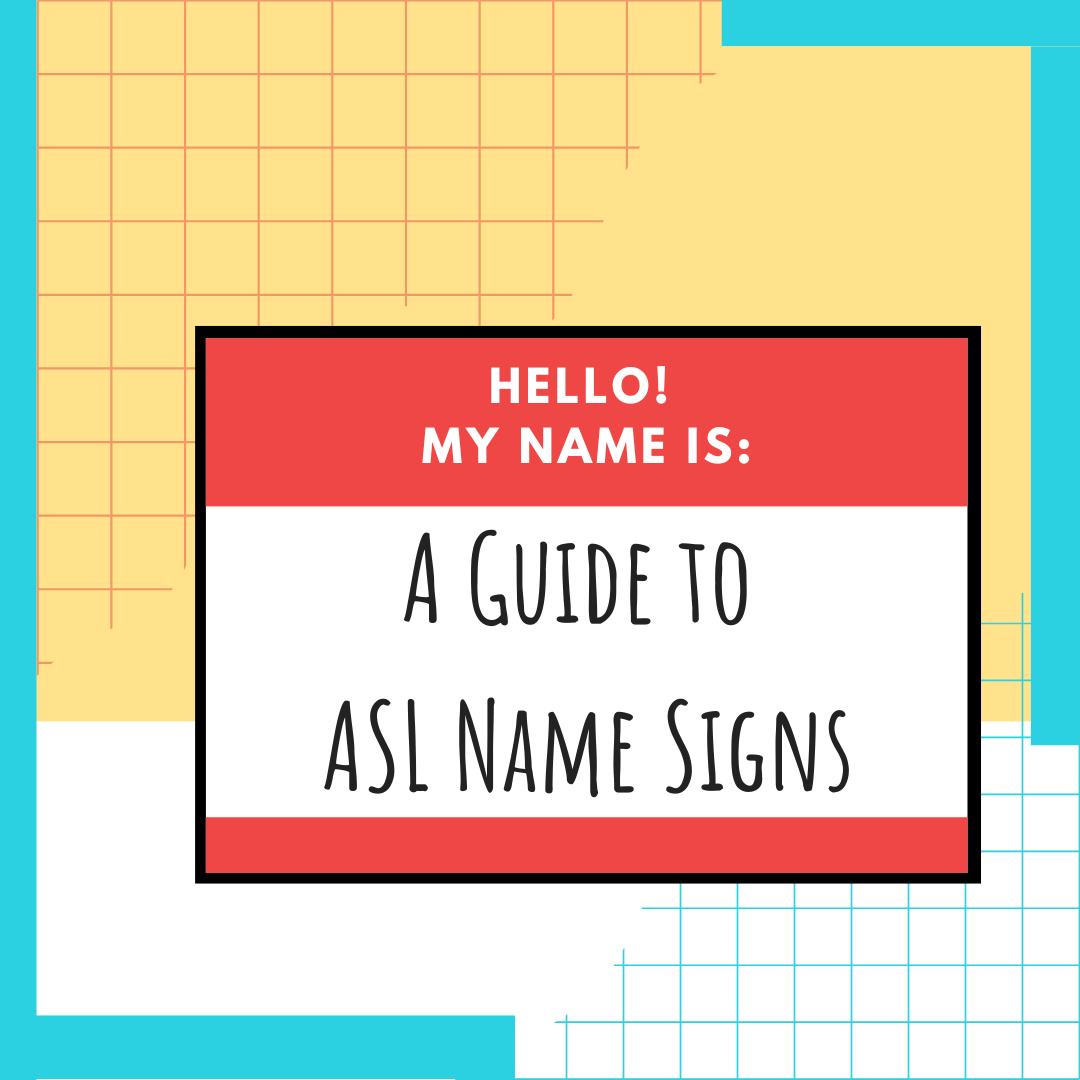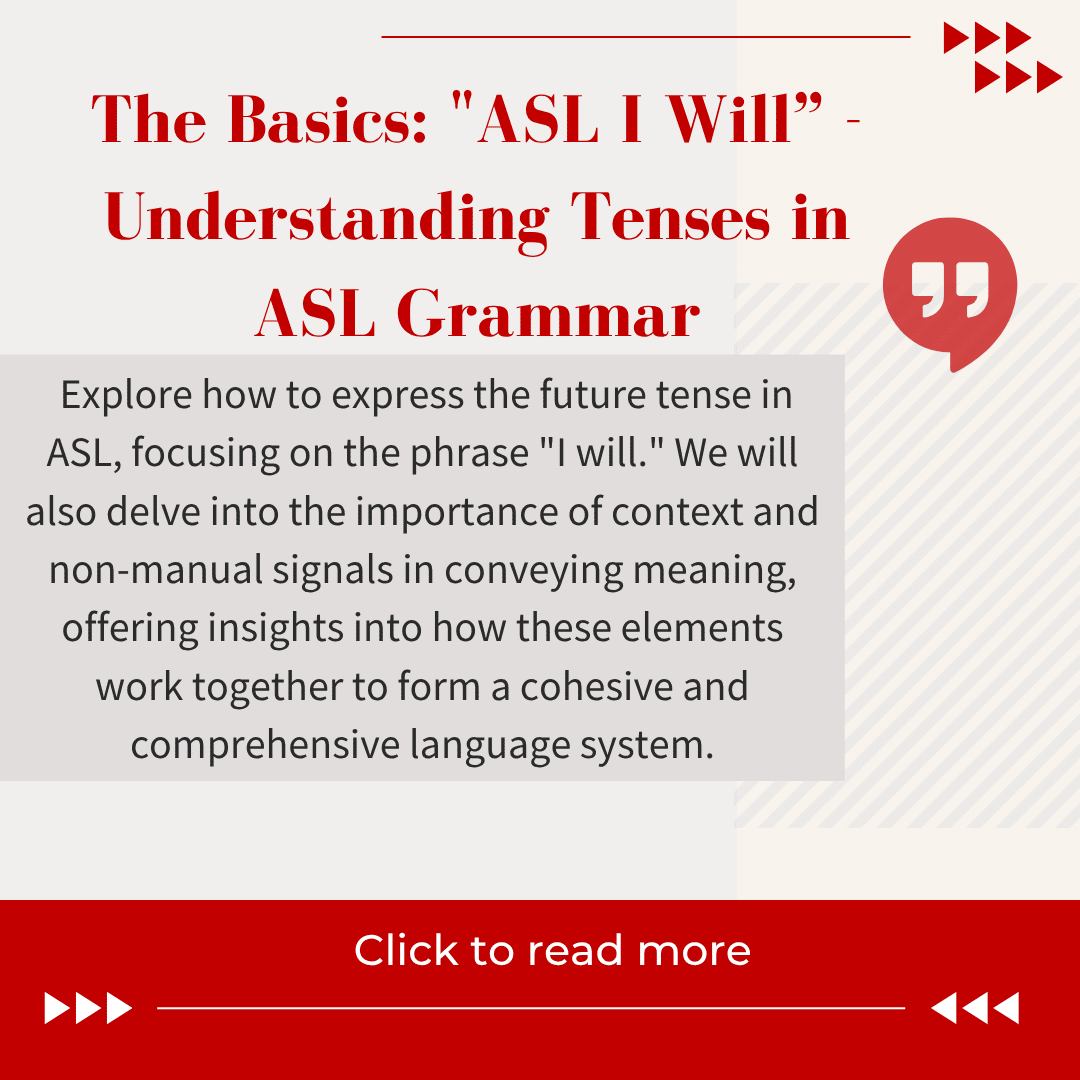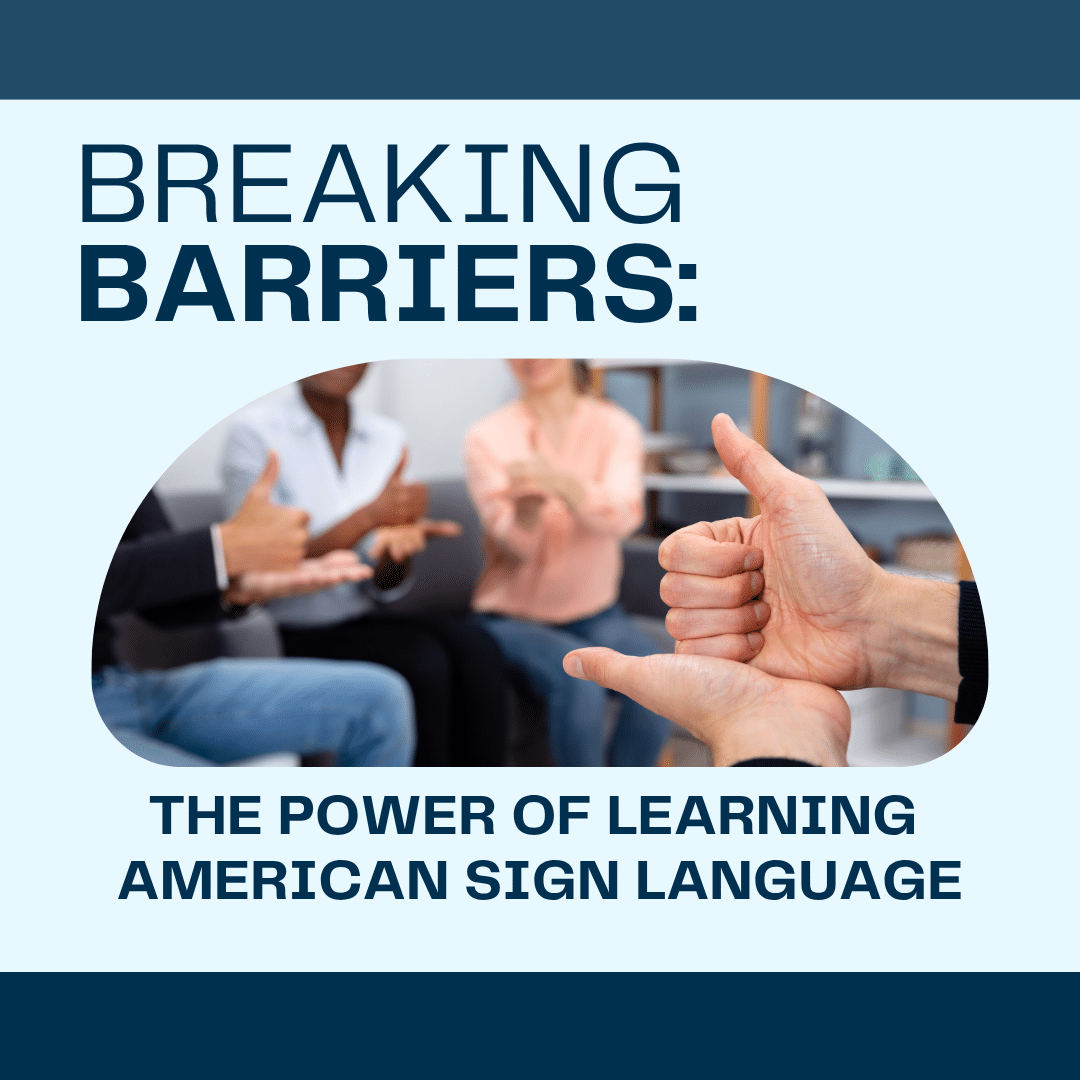
Start ASL’s Top 150 Basic ASL Sign Language Words
- by Michelle Jay

We have compiled a great collection of videos showing the top 150 basic sign language words.
These are the words that you should learn first. Learning the signs for these ASL sign language words is a great way to build a basic vocabulary foundation before learning full American Sign Language. These 150 words were chosen by finding the most important words learned in our ASL 1 course. These are the words that students learn first in the class and are therefore extremely useful to learn–especially if you plan to take an ASL class in the future.
These top 150 words have been organized into categories. This should make them easy to find and easier to learn. The more important categories are listed toward the top. These are the basic ASL sign language words that you will find yourself using the most often. The categories toward the bottom are best for enriching basic conversations. Keep in mind that this list is just a starter and contains only the most common basic signs used in American Sign Language.
And, of course, there is more to American Sign Language than just memorizing vocabulary. ASL has its own grammar, syntax, culture, and history! Don’t forget to check out our free American Sign Language online classes where you can learn sign language and not just the basic sign language words!
First Signs
Food & Drink
School & Education
More Sign Language Words:
- 👋 Common
- 🏁 First Signs
- 🐴 Animals
- 🎨 Colors
- 🍔 Food and Drinks
- 👪 Friends and Family
- 🏠 House and Home
- 👥 Jobs and Careers
- 👕 Descriptions and Clothing
- ❄️ Seasons and Holidays
- 📚 School and Education
- 🕑 Time
> Want to learn more? Take Our ASL 1 Course for Free >
Basic Sign Language (ASL) Grammar Explanations
The Five Elements
Just like how we see English words as the arrangement of letters, there are five basic sign language elements that make up each sign. The five elements are: handshape, movement, palm orientation, location, and facial expression. American Sign Language is a very expressive language, and understanding these elements will give you a better understanding of how signs are made and what makes them different.
Your Dominant Hand
You have a dominant and non-dominant hand. If you are right-handed, your right hand is your dominant hand. If you are left-handed, your left hand is your dominant hand. If you are ambidextrous, choose one hand to use as your dominant hand, and stick with it.
There are three types of signs when it comes to what hand you will use:
- One-handed signs: Uses only your dominant hand
- Two-handed symmetrical signs: Uses both your dominant and non-dominant hand where they both move the same way
- Two-handed non-symmetrical signs: Uses both your dominant and non-dominant hand where the dominant hand moves while the non-dominant hand remains stationary
Your non-dominant hand will never move unless your dominant hand is moving the same way. This is very important for when you graduate from basic sign language into more complex signing. You don’t want to get confused!
Basic Handshapes
These are a few basic sign language handshapes that are used to form many signs. Practice forming these handshapes–you will find them very helpful for learning ASL vocabulary.
- Open hand: Your hand is flat and your fingers are spread apart (5 hand)
- Flat hand: Your hand is flat and your fingers and thumb are touching
- Curved hand: Your hand is curved and your fingers and thumb are touching
- Bent hand: Your hand is bent at the knuckles and your fingers and thumb are touching and held straight
- Clawed hand: Your hand is curved and your fingers are separated
- And hand: Your hand is formed so that all of your fingertips are touching
- One hand: Your index finger is up with your palm facing forward
Your Signing Area
Your signing area is the space in front of your body from the top of your head down to your waist and from shoulder to shoulder. Most signs are made in this space during everyday conversation. Your signs should not extend beyond this area unless you are signing for a huge audience (where you should sign larger and slower).
Direction
Basic sign language direction is very important when it comes to the meaning of signs. A sign can have one meaning when it moves one way and another meaning when it moves the other way. For example, the signs for IN and OUT have different directions and different meanings.
Direction can also provide information about the subject and the object of a sentence in basic sign language. You can move the sign GIVE away from you to signify that you are giving something to someone. You can move the sign GIVE from one person to another to signify that the first person is giving something to the second person. You can do this with many signs, such as: TELL, ASK, and SEND.
Tense
In English, words are spelled differently to indicate the past, present, and future. In basic sign language, you use your body to indicate tense. Signs for the present are signed in front of your body (TODAY and NOW), signs for past are signed moving backward (BEFORE and YESTERDAY), and signs for the future are signed moving forward (TOMORROW and SOMEDAY).
Intensity
In English, intensity is usually shown by adding words. In ASL, intensity is shown by varying the intensity or speed with which a sign is made or by incorporating facial expression.
For example: the sign for WALK can be made quickly or slowly to indicate how the person is walking, LIGHT BLUE is signed with a slight wrist turning motion, and SMART becomes BRILLIANT and PRETTY becomes BEAUTIFUL when signs are exaggerated.
Iconic Signs
When signs look like the word they are representing, these are said to be iconic signs. These signs can often be recognized by people who don’t know basic sign language. The sign for ELEPHANT is signed like an elephant’s trunk. The sign for SWIMMING looks like a breast stroke. There are many signs like this.
Some signs seem to be arbitrary when you first see them. When you look at the root, though, some signs becomes more iconic. The sign for HOME is made by placing your hand on your lips, then on your head. This represents where someone eats and sleeps.
Initialized Signs
An initialized sign is one that has the handshape of the first letter of the word. You will come across many of these signs in basic sign language and some are very helpful for knowing the specificity of the sign. For example, the signs for DOCTOR and NURSE look the same except that DOCTOR is signed with a “D” handshape and NURSE is signed with an “N” handshape.
The Person Ending
To show a person’s occupation or nationality, you would add the person-ending sign after the occupation or nationality. For example, you would sign TEACH + person-ending for the sign TEACHER. You could also sign AMERICA + person-ending for the sign AMERICAN. To make the person-ending, point both of your flat hands forward in front of your chest with your palms facing each other. Then, move both of your hands down at the same time.
Gender
Location is what shows you the gender of some signs. Most male signs are formed on or near the forehead while most female signs are formed on or near the cheek or chin. For example, FATHER is signed by touching the tip of your thumb to your head, while MOTHER is signed by touching the tip of your thumb to your chin.
Plurals and Possessives
To form plurals, you have a few different options:
- The most common way is to repeat the sign several times on either side of your body. Repeating the sign for CAT would mean “multiple cats.”
- You can also add a number or sign that indicates quantity after the sign. You can sign CAR + MANY to mean “many cars.”
- You can also form the sign, then point with your index finger at a number of locations in your signing area. You can sign HOUSE then point around in your signing area to mean “many houses.”
Possessives are rarely used because you can usually use context. However, you can sign the letter “S” with a twist of your wrist after you sign the noun or fingerspell the word that is in possession of the thing you are talking about.
Negatives
To form a negative, you can do a few things:
- Sign the word NOT before the intended word. In relation to English, this adds the un-, im-, in-, or dis- prefix to the word (NOT + HAPPY = “unhappy”).
- Shake your head back and forth while signing the word (BELIEVE + (shake head) = “don’t believe”).
- For some signs, you can twist your hand downward to indicate a negative (WANT + (twist hands so palms face downward) = “don’t want”).
Articles
Articles (a, an, and the) are normally left out of basic sign language conversation. They are not necessary. However, articles are sometimes used for teaching deaf students English.
Punctuation
Like articles, punctuation marks are left out. They are also unnecessary (facial expression suffices). If you feel you need to add a punctuation mark, just trace the shape of the mark in the air with your pointer finger.
Numbers
Please see the Numbers section of our ASL Dictionary for videos of how different numbers are signed in ASL.
Repeating Signs
Repeating a sign several times can make that sign plural. Repetition can also add another dimension to ASL. To show a continuous action, you would form the sign with a repeated, slow circular movement. To show a recurrent action, you would form the sign with several quick repeated movements. For example, you can sign LOOK several times with a slow motion to show that you gazed steadily at something, but signing LOOK with a quick repeated motion shows that you glanced at something numerous times.
We hope we were able to clear some things up about basic sign language for you! Now that you are armed with this information, are you ready to learn some ASL? Then jump on over to our free American Sign Language lessons!
Start Learning ASL Today!
 Ready to start learning real American Sign Language and not just basic signs? Do you want to be a part of the vibrant Deaf community? Check out our Free ASL 1 Course or our Complete 4-Level ASL Course options and start learning ASL today!
Ready to start learning real American Sign Language and not just basic signs? Do you want to be a part of the vibrant Deaf community? Check out our Free ASL 1 Course or our Complete 4-Level ASL Course options and start learning ASL today!









29 Responses
I know this is a way to keep a self improving possibility and keep out of trouble ,a knowledge test is the great lesson .and looking forward to the tools to influence my skill endorsements to to to completed.
I understand there are regional variations for ASL, like any language. What region is represented here?
Thanks for the teaching, we love to know more. How do I sign up for the classes
i love this
I can’t seem to click arrows back and forth anymore
Wondering if/when the “Top 150 Words” will go back to being able to go from word to word by clicking ()? All of ASL Online is so very helpful and simple to use. Thanks to everyone involved.
very interesting so very interesting, compliments to Michelle jay
Love this program. Thanks for sharing.
This very help for me because I’m a highschool student learning asl do you have any tips for me?
I am naturally right-handed, but I find that it is easier to sign with my left hand. One of my friends moms no sign language and she said that the most difficult thing was teaching left-handed people because you are only supposed to use your right hand as your dominant hand, or it means something else. Should I switch to using my right hand or keep using my left?
Hi Sarah, This is a great question! Firstly, there are a lot of left-handed signers. There really is no difference except that your left hand is your dominant hand instead of your right hand. You can learn more about this in Unit 3 under “Your Dominant Hand” here: https://www.startasl.com/learn-sign-language-online-asl1
i was wondering if you wanted to, lets say, tell someone draw a awful animal in ASL, would you incorporate all the hand signs? thanks!
THANKS FOR THE HELP #oldcarrot
I see in all of these clips they are using their right hand, I’m a lefty and naturally use my left hand, is that ok or am I going to have to adjust?
Hi Bryce, Yes! You should use your left hand as your dominant (moving) hand if you are left handed. :)
Well explained
My ASL friends, Tim and Lauren, helped me with sign language. However, when i started using this site I understood so much more than they could ever teach me. Yay!
This website works perfectly for people who are homeschooled or is taking SL, well done on the site
I’m an ESL teacher in South Korea. After poking around on here and experimenting, I’m using ASL vocabulary to help me learn Korean as well as teach my students English. It’s also helping me communicate with an autistic student who goes nonverbal whenever there’s too much noise.
YAY!
Great refresher course for me!
This site is amazing and I have already learned how to sign multiple words. I have tried to enroll in my college ASL class, but it is extremely hard to get into! I am hearing, but I will work in the counseling field, so it is my responsibility to make sure that I can communicate in several different languages. I am so excited to have found this site! Once I catch on a bit more, I will go ahead and purchase a tutor or material when I can afford it.
I would like to be a sign language interpreter as my job career i’m only 17 so i would like to became semi fluent in sign language before i go to college school for it if took me months to find a website that would work and then i found this website and its the absolute best so far. thank you!
I started to Learn Sign Language at Camp Tidnish, It is a camp for people who have Intellectual disability’s This Site is very helpful to me because I learned how to speak to my best friend, She sent me this link because she is deaf and she wanted me to learn just like her little brother had to (Her brother is hearing)
Thank you for helping us learn sign language
I met my girlfriend when she didnt have hearing aids and i had to lean sign language and this really helped!
thank you so much for such a very helpful contribution of rising up deaf education.
i am an educator in a school for the deaf in Rwanda(Estearn-Africa)
This has really helped me. I’ve been looking for videos but on youtube very many are giving incorrect signs now i just have to choose the word and watch the sign for that word.
Thank you for this valuable information. I have a new friend who I want to have conversations with. I will learn ASL to speak to her!
Thanks for this you never know when you’ll meet a deaf person and i want to be able to speak to them.